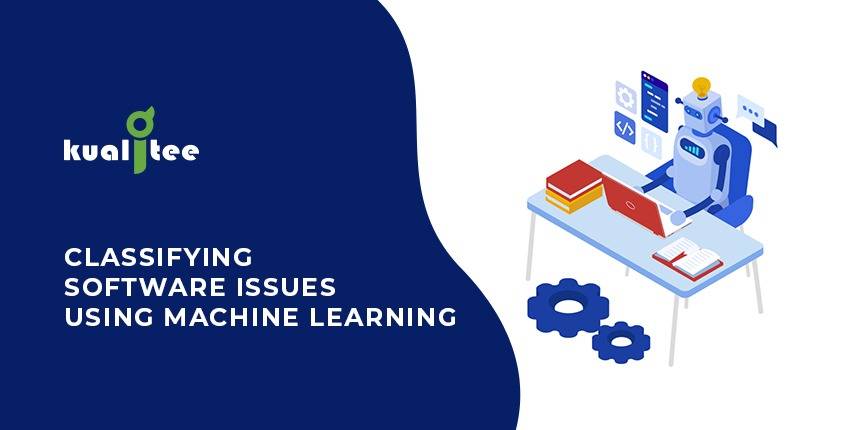Machine Learning (ML) and Artificial Intelligence (AI) have gained prominence in recent years. We witness different activities that are performed by machine learning without knowing it. The most primary use cases include image tagging by Facebook. Similarly, Gmail recognizes the patterns to filter spam emails. There are different ways in which ML has become a norm in businesses since it follows an approach in solving problems where less information is available.
Organizations are utilizing predictive models using ML approaches and classify them into defective and non-defective modules. These ML techniques help developers in retrieving useful information after classification and analyze data from different perspectives. These techniques when combined with defect management software, prove to be useful in terms of software bug detection.
Software Defect Prediction (SDP) Model
A software defect refers to an error, flaw or bug in a software application that produces unpredicted or unusual outcomes. Software bugs are errors that cause different results as compared to anticipation. Most of these errors appear from source code or design. Software defects increase costs, delay release schedules and affect software quality. To ensure quality software, defects need to be detected and rectified in the early stages of the development process.
Software defect prediction identifies defective modules and involves different types of testing. By early detection of an error, teams can allocate resources effectively, reduce the time and cost of developing quality software. Thus, an SDP model plays a crucial part in improving the quality of software applications.
Automated Data Entry Tasks
ML and predictive modeling algorithms streamline and optimize data entry tasks, automating time-consuming documentation procedures. By leveraging ML algorithms in data entry, Quality Assurance (QA) teams can shift their focus toward higher-value problem-solving tasks, contributing to increased productivity and efficiency within software development cycles.
Spam Detection
In addition to utilizing defect management software, QA teams leverage ML algorithms to detect and mitigate spam. Through the continuous learning of spam filters, AI systems recognize and filter out junk emails and phishing messages, analyzing patterns across various systems to enhance the accuracy of spam identification.
Moreover, the integration of machine learning in spam detection has revolutionized the efficacy of email security measures. ML-powered algorithms are continually updated and trained to identify emerging spam tactics, adapting in real-time to counter increasingly sophisticated phishing attempts and evolving spam threats.
This proactive approach allows QA teams to strengthen email filters, ensuring a higher level of protection against malicious emails, thereby safeguarding user privacy and maintaining the integrity of communication systems. As a result, the strategic application of machine learning in spam detection significantly contributes to fortifying cybersecurity measures and bolstering the overall integrity of digital communication channels.
Product Recommendation
ML models excel in discerning customer preferences and are leveraged to identify and recommend products that consumers are more likely to purchase. These algorithms extract hidden patterns among items and cluster similar products to provide tailored recommendations to customers, thereby boosting product engagement and sales.
Furthermore, the application of machine learning algorithms in product recommendation systems significantly enhances the user experience by personalizing content based on individual preferences. By analyzing user behavior and historical data, ML models can predict and suggest products that align with a customer’s interests, fostering a more tailored shopping experience. This approach not only increases user engagement but also strengthens customer loyalty, leading to improved conversion rates and customer satisfaction within e-commerce platforms and various product-driven businesses.
Financial Analysis
Machine learning can also be used in financial analysis to handle a large volume of data, quantitative and accurate historical data. ML algorithms are used in trading, portfolio management, fraud detection, and loan underwriting, delivering accurate and efficient analysis in the financial sector.
In financial institutions, the integration of machine learning streamlines the process of loan underwriting by analyzing vast amounts of historical financial data. ML algorithms assess the creditworthiness of applicants by identifying key patterns and risk factors, aiding in more informed lending decisions. Furthermore, these systems continuously learn and adapt, improving the accuracy and efficiency of loan approval processes while minimizing the risks associated with bad debt or defaults. This approach fosters a more robust and adaptive financial ecosystem, benefiting both lenders and borrowers.
Image Recognition
Computer vision, a domain of ML, enables the extraction of valuable symbolic information from images. This technology, encompassing machine learning, data mining, and pattern recognition, is extensively used in healthcare, automotive, marketing campaigns, and other sectors. Image recognition tools have significant implications, offering precise insights and enabling efficient decision-making.
Predictive Management
The manufacturing industry leverages AI and ML to discern patterns in factory data, facilitating predictive maintenance to reduce unexpected failures and unnecessary preventive maintenance services. This application of machine learning contributes to streamlined operations, cost savings, and operational efficiency in manufacturing environments.
Customer Sentiment Analysis
ML and AI techniques are employed for sentiment analysis to comprehend customer opinions and reactions. Analyzing social media conversations, customer reviews, and feedback provide invaluable insights into consumer preferences, satisfaction, and grievances. By utilizing Natural Language Processing (NLP) and machine learning algorithms, companies can understand the sentiment behind customer feedback. This enables businesses to make informed decisions about product enhancements, customer service improvements, and overall consumer satisfaction.
Sentiment analysis is instrumental in shaping marketing strategies, product development, and service delivery to align with customer preferences and needs. Furthermore, ML models and AI algorithms used for sentiment analysis help in predicting future trends and adapting business strategies accordingly. The ability to interpret and respond to customer sentiments enables companies to establish better rapport with their customer base and drive loyalty and sales.
Conclusion
ML has evolved over the passage of time, and the above use cases are a few industry-specific problems that ML can resolve. The realm of ML applications continues to expand and innovate, offering solutions across various industries. ML platforms speed up data analysis, assisting businesses to detect risks and deliver better quality software. Thus, enterprises need to structure the data before using ML models and algorithms along with defect management software to achieve software quality.
The growth and potential of ML applications have brought about significant advancements in industries worldwide. Companies are continually integrating ML tools and techniques into their processes to enhance efficiency, productivity, and overall performance. ML has become a vital component in driving innovation, from personalized customer experiences to streamlining complex operations. As it continues to evolve, new breakthroughs and applications emerge, unveiling possibilities to tackle challenges previously deemed insurmountable.
Enterprises adopting ML must also emphasize data governance, ensuring data integrity, accuracy, and relevance, thereby fortifying the foundation for robust machine learning models that drive informed decisions and facilitate software quality assurance. The proactive utilization of ML, coupled with meticulous data structuring, establishes a powerful framework for businesses to not only resolve problems but also anticipate and mitigate potential issues, fostering an environment of continuous improvement and growth.


























